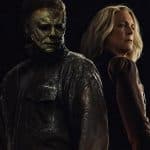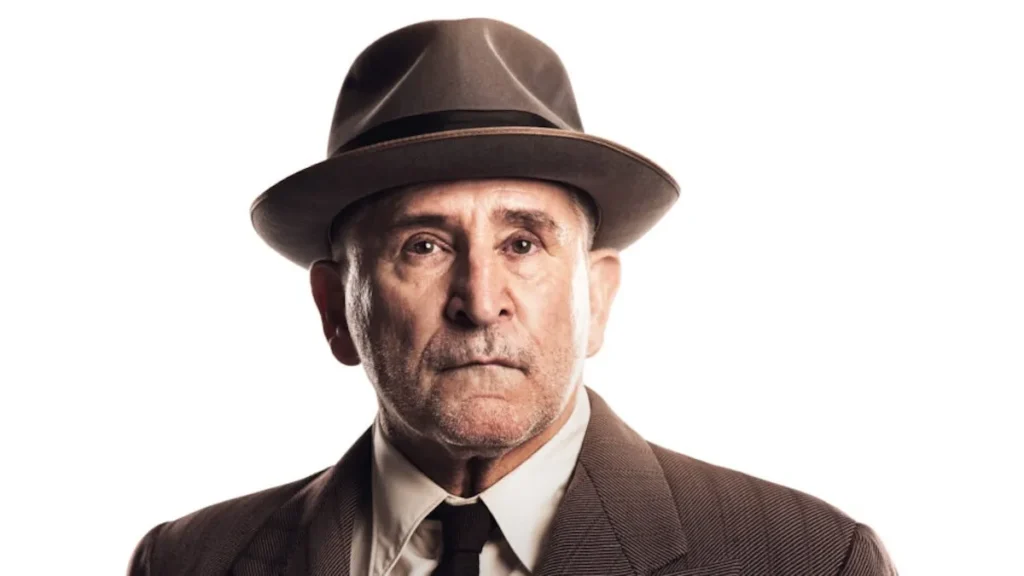You’re here because you’ve felt that chill—the one that crawls up your spine when you see those dead, glassy eyes and that stitched-on smile. You’ve seen the Annabelle movie, sat through the jump scares, and maybe even slept with the lights on. But what you haven’t done is confronted the terrifying, blood-soaked reality this horror franchise is built upon.
This isn’t just another horror movie based on a true story. This is a deep dive into the American psyche, a exploitation of our deepest fears wrapped in the innocent package of a child’s toy. We’re going to tear apart the Annabelle horror movie series, from its iconic birth in The Conjuring to its own twisted origins. We’re exposing the real demonic doll, the Satanic cult panic of the 1970s, and why this piece of haunted object cinema continues to haunt our collective nightmares. Buckle up. This is where the real terror begins.
What is the REAL Annabelle Story? The Warrens’ Case File from Hell
Before Hollywood turned her into a porcelain-faced nightmare with glossy cinematics, Annabelle was nothing more than a disturbing entry in the case files of America’s most famous paranormal investigators—Ed and Lorraine Warren.
The real doll wasn’t crafted with sharp cheekbones or sinister eyes. She was just a plain Raggedy Ann doll, bought in the 1970s from an ordinary hobby store. A mother gifted it to her daughter, Donna, a nursing student, never suspecting that this innocent-looking toy would become one of the most terrifying haunted objects in history.
At first, the activity around Annabelle was unsettling but not catastrophic. She moved from room to room without explanation, appeared kneeling on the floor, and even left scrawled notes on parchment paper with chilling messages like “HELP US.”
Things escalated when Donna’s friend, Lou, was viciously attacked. According to the Warrens, he woke to find the doll near him before suffering deep, bloody claw marks across his chest—wounds so violent they nearly cost him his life.
That was the breaking point. The Warrens concluded that Annabelle wasn’t haunted by the spirit of a child at all. Instead, she was a vessel for an inhuman, demonic entity, using sympathy and manipulation as a trap to steal human souls.
To contain the evil, Ed and Lorraine placed Annabelle inside a specially blessed glass case at their Occult Museum in Connecticut—where she still sits today, a prisoner of her


This is the point at which the films expose the truth. The real story is psychologically terrifying enough—so why did Hollywood feel the need to invent a satanic cult?”
Why the Annabelle Movies Are a Masterclass in Horror Franchise Building (And a Failure in Subtlety)
When James Wan unleashed The Conjuring in 2013, he didn’t just create a modern horror classic; he built a universe. The brief, terrifying appearance of the Annabelle doll was a lightning bolt. Audiences were hooked. They needed more. And the studios were more than pleased to deliver.
The Annabelle movie franchise is a spin-off engine running on pure, unadulterated dread. It’s a business model disguised as a ghost story. But does it work? The box office numbers scream “yes,” but the soul of the original true story often gets lost in the cacophony of jump scares and cult rituals.
How the Films Butchered and Amplified the True Story for Maximum Screams
This is where the real action begins to unfold. The screenwriters, led by Gary Dauberman, looked at the slow-burn psychological terror of the real case and said, “Not enough.” Therefore, they introduced a significant amount of Hollywood horror.
From Raggedy Ann to Porcelain Terror: The first and most obvious change. The uncanny innocence of a Raggedy Ann doll makes it creepy. The movie’s Annabelle is a porcelain monstrosity, a visual icon of evil that fits perfectly into the horror cinematography of the Conjuring universe.
Inventing the Satanic Cult & The Blood Ritual: The real case involved an inhuman spirit. The Annabelle movie introduced Annabelle Higgins, a member of a murderous Satanic cult, who imbues the doll with her evil spirit through a bloody, ritualistic suicide. This taps directly into the 1970s American fear of cult murders and the Manson Murders era, a time when the safety of suburbia felt like it was crumbling.
The “Baby in Danger” Trope on Steroids: The first film pivots on Mia and John, a young couple expecting their first child. The demonic doll doesn’t just want to scare them; it wants their souls, specifically the soul of their unborn child. This maternal fear and horror is a powerful, primal trigger that the film leverages relentlessly.
What the Critics Got Wrong (And Right) About This Demonic Doll
Let’s be blunt: critics largely savaged the first Annabelle movie. They called it a “cash grab sequel,” with “flat visuals” and a “grating sound mix.” They pointed out the “overused pan reveals” and the “misguided climax.” And in many ways, they weren’t wrong.
The film suffers from a “hollow horror execution.” It relies on loud noises and things popping into frame rather than building a sustained, atmospheric dread like its predecessors, The Exorcist or Rosemary’s Baby. The characters of Mia and John can feel like cardboard cutouts, vehicles for the next scare rather than real people we fear for.
But the critics missed the point of its creepy iconography. The Annabelle doll itself is a home-run horror design. It’s a symbol that transcends the film’s flaws. And the prequel, Annabelle: Creation, directed by David F. Sandberg, was almost universally praised for course-correcting, delivering a superior supernatural thriller with genuine heart and terrifying set pieces that fleshed out the doll’s origins with masterful skill.
Who Brought the Terror to Life? A Cast of Best Performances
Even if a film features the scariest possessed toy in history, it fails without a cast that effectively conveys the absolute terror. The Annabelle movie franchise has seen its share of compelling performances.
Annabelle Wallis as Mia

As the pregnant mother, Wallis is the anchor of the first film. Her descent from a serene expectant mother to a woman fighting for her child’s soul is the emotional core, even when the script lets her down. Her wide-eyed, genuine fear sells the paranormal activity happening around her.
Ward Horton as John

Horton plays the skeptical husband, a classic horror trope. While his character can be frustrating, Horton delivers a believable arc from rationalist to a desperate man willing to believe in the unbelievable to save his family.
Anthony LaPaglia as Samuel Mullins in “Creation”

LaPaglia brings a devastating, grief-stricken weight to the role of a dollmaker who tragically invites the demonic entity into his home. His performance is a masterclass in sorrow and regret, giving the horror a tragic foundation.
Talitha Bateman as Janice in “Creation”

Bateman delivers a heartbreaking and terrifying performance as a polio-stricken orphan who becomes the primary vessel for the demon. Her physicality and vulnerability make her possession all the more disturbing.
How the Trailers Sold Us a Horror Revolution (And What We Actually Got)
The marketing team for the Annabelle movies deserves a raise. The trailers are mini-masterpieces of tension. They focus on the haunted doll’s unnerving presence, using quick cuts of its face, the iconic moment from The Conjuring, and the promise of a direct connection to the Warrens’ most terrifying case.
They tease the “based on a true story” angle heavily, knowing it’s a potent hook for American audiences raised on tales of the Warrens. The trailers for the later films, especially Annabelle Comes Home, cleverly use the doll as a “key” to unlock other haunted objects in the Warrens’ artifact room, thereby expanding the universe and igniting fan theories.
“The ‘Creation’ trailer is a lesson in how to sell a prequel. It’s darker, more atmospheric, and promises a story that adds to the mythology, rather than just leaching off of it.”
Fan Reactions: Why We Can’t Look Away From This Creepy Doll
Despite the critical drubbing of the first film, the Annabelle horror movie franchise has a ferociously dedicated fanbase. Online forums and Reddit threads are filled with deep dives into the Conjuring timeline, analyses of every demonic doll scene, and debates over which film is the scariest.
The fan reaction is a testament to the power of the core concept. The idea of a haunted object, something so mundane and innocent being a conduit for pure evil, is a horror trope that never gets old. Fans have embraced the over-the-top Satanic cult storyline and the relentless jump scare horror technique because, at its core, it’s fun. It’s the rollercoaster effect—you scream your lungs out, and then you get back in line to do it all over again. The films have become a staple of modern horror movie culture, a shared nightmare we love to revisit.
